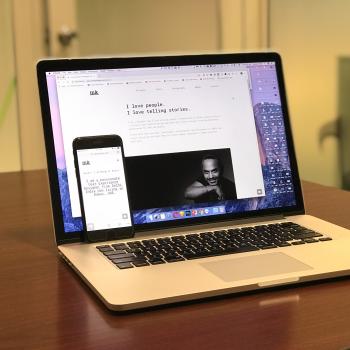This morning, the United States Supreme Court handed down a series of decisions, the most reported of which was Fisher v. University of Texas at Austin, 570 U.S. ___ (2013). What happened was this: Abigail Fisher, an applicant to the University of Texas at Austin in 2008, was rejected from admittance into the university. She then sued the university, claiming that because its admission policy since 2004 explicitly considered race in admission, her application had been rejected simply because she was white (the way that the system works is described on p. 3-4 of the majority opinion).
For those not in the know, this sort of thing is called affirmative action, a consideration of race as a factor in admissions processes and hiring decisions because certain racial groups have been discriminated against and thus disadvantaged for much of the history of the United States. For Fisher, the University of Texas’s usage of affirmative action violated the Equal Protection Clause of the Fourteenth Amendment in the United States Constitution, which holds that ‘no state shall…deny to any person within its jurisdiction the equal protection of its laws.’ In other words, Fisher’s lawyers argued that affirmative action denied Fisher ‘equal protection.’
The court did not rule on the merits of Fisher’s case. Instead of taking a side on what they thought about university admission schemes that privilege underrepresented racial minorities, the Court voted 7-1 to send the decision back to the Fifth Circuit Court of Appeals. Although the Fifth Circuit had affirmed affirmative action in theory and shown that the University of Texas’s student body had in fact been diversified by their admissions policy, the Court’s majority opinion argued that the University had not in fact shown how the affirmative action actually works in the student body’s educational experience.
This was because as they examined the appellate decision in relation to the precedent cases in affirmative action (Regents of the University of California v. Bakke, 438 U.S. 265 [1978]; Grutter v. Bollinger, 539 U.S. 306 [2003]; and Gratz v. Bollinger, 539 U.S. 244 [2003]), they determined that the appellate judgment did not meet the standard of ‘strict scrutiny‘. As Justice Clarence Thomas reminds us in his concurring opinion, ‘strict scrutiny’ was first articulated in Korematsu v. United States, 323 U.S. 214 (1944) as a mandate to articulate a ‘pressing public necessity’ to justify racial discrimination. (Of course, because Thomas moves to strike down affirmative action because he does not see it as a public good, his usage of Korematsu will work to the chagrin of many Asian Americanists because this means in turn that the very case used to justify the Japanese American internment in the Second World War is now being used by a conservative justice to say that where the internment was justified as a public good, affirmative action is racist because it’s unjustifiable as a public good.)
In short, the Fifth Circuit decision was ruled to be ‘strict in theory but feeble in fact,’ that is, the University has to show now how a diverse student body actually enhances educational outcomes.
Many journalists are describing the decision as basically a non-decision and a compromise on whether universities can use affirmative action in their admissions processes. Some, however, have read deeper into the decision. One very interesting debate in The New Republic centered on whether this decision in fact weakened the bases for affirmative action or strengthened it. In a striking analysis of the decision that includes Justice Ruth Bader Ginsburg’s dissent, Colorlines argues that Ginsburg’s dissenting opinion that the university had already shown that it adhered to strict scrutiny in the Fifth Circuit case is actually a roadmap for how the case should be re-argued in the Fifth Circuit. For Ginsburg, despite the colour-blind language of merit-based admissions, ‘only an ostrich could regard the supposedly neutral alternatives as race unconscious.’ Because many neighbourhoods in Texas (and arguably elsewhere in the United States) remain racially segregated, Ginsburg contends that the idea that you can just have the best and brightest as automatically racially diverse is ludicrous: people are still disadvantaged by race because that’s still what drives residential patterns and thus where people go to school and how they’re trained. For Colorlines, this argument is the road forward for the university to keep arguing for its consideration of race in admission: it’s that the public good can only be achieved if people from those different residential pockets are brought together in the university, which will propel the future elimination of race-based residential segregation altogether so that a more equal society can be created.
Following Justice Ginsburg’s dissent and the Colorlines piece, I’d like to suggest that this push by the Court toward ‘strict scrutiny’ is in fact very instructive for public discourse, as it calls universties to learn to articulate the workings of these institutions as designed to bolster desegregated democratic deliberation as a public good. It’s in light of that that I’d like to try my hand at articulating why racial diversity in public universities is a public good, as well as why public universities are a public good in general.
It’s this: public universities exist to teach people how to be public, which includes a fair amount of time devoted to debates about what the ‘public’ really means.
In other words, contrary to popular perception, the goal of a public university is not to teach people technical skills with which they can go out and get a lucrative job right away. That’s never been the plan. The goal is for the university to be a space of experimental education, where people from all walks of life can come into a space where they become informed and try out ideas for how the public sphere should work. It’s thus no surprise that the work of university academics is often described as an academic conversation. Academics believe that conversation is hard work, especially if you want it to be informed. That’s why we teach and research at the university: we want to get the public conversation right. That’s why we publish: we make public the research and teaching that we do.
In this framework, the university’s educational mission is to get people out of their own private communities so that they interact with each other in an educational context. It’s here that Justice Thomas completely misses the point and that Justice Ginsburg gets it completely right. Justice Thomas operates off the assumption that because the university teaches people stuff, everyone has to start from the same baseline, which means that if it is indeed (as he says in his concurring opinion) ‘whites and Asians’ who start out better off with the right skills to learn and ‘blacks and Hispanics’ don’t (that’s him, not me), then so be it. This is because Justice Thomas has a particular view of the university: it’s a place where people are educated in skills, whether intellectual or technical, that requires them to have prerequisite knowledge that underprivileged people just might not have.
Unfortunately, there’s nothing ‘public’ about that model of the university.
The point of a ‘public’ university is that the education goes beyond skills training and into a deliberative debate over what the public actually means. To do that, you have to have a diversity of people, or else your ‘public’ will just become a racially-stratified oligarchy. That’s exactly what Justice Ginsburg understands. To strike down affirmative action doesn’t just mean that private individuals from certain underprivileged communities won’t have the chance to succeed. There’s nothing ‘public’ about that. Put into a public framework, it means that they will never become part of the public conversation, and without the contribution of those voices, elitist assumptions will continue to prevail. This is exactly what bell hooks teaches us in her books like Teaching to Transgress and Outlaw Culture: the students of the university aren’t some intellectual elite who need to be taught high cultural things. No, they enter a public university in order to learn to have a conversation about the things in life that seem the most banal, including popular culture, in a way that reveals that everything is part of our public conversation (which is why people should never make the ‘taxpayers pay for this crap’ argument against pop culture studies in the university: do that, and shoot the public in the foot!). The whole point of a public university is that it is an ongoing discussion of what the public is and how it should deliberate over its society’s affairs.
The argument for the public good of affirmative action, then, is that desegregation is a public good. It is a public good because it keeps the ‘public’ conversation shaped by the university from becoming (or in some quarter, remaining) a race-stratified oligarchy. But it is also a public good if indeed segregation is still a problem because the university is a space that takes people from the most marginal communities who can’t have interacted with diverse people and puts them in contact. This, by the way, is why schools like the University of California, Los Angeles had to repudiate the statements in political science student Alexandra Wallace’s YouTube rant against ‘Asians in the Library‘: her statements did not reflect the actual reality of interracial interaction (among other demarcators of diverse student interaction) and worked against the public good that the university was trying to promote. This is why the University of California, Irvine, and the University of California, San Diego, have been cracking down on student clubs, fraternities, and sororities that use ‘blackface’ or ‘yellowface’: in a space that seeks informed public conversation, especially on race, this sort of speech is simply unacceptable. One might say that one has freedom of speech, but the university seeks to educate on what kinds of speech lead to the public good , speech that leads toward public interaction and does not perpetuate the segregation that is unbecoming of an egalitarian public sphere. Note well that this is not an argument for the state to use its police power to impose whether certain forms of speech as acceptable or unacceptable. While the precedent Bakke case as well as theologian Stanley Hauerwas in The State of the University would acknowledge that this is still an articulation of a state interest, this good speech being shaped in a university is moulded by debate and deliberation, not imposition (which sort of gets at the problems with which critical theorist Judith Butler deals in Excitable Speech).
This is where the majority opinion can actually work as a blessing in disguise for affirmative action. If the university does not meet strict scrutiny because it only considers race without considering the structural reasons as to why race remains a structuring force in our current society, then of course the University of Texas’s racial admissions program should be called into question. But that’s not the point of the decision. If even someone as progressive as Justice Sonia Sotomayor can sign on to the majority decision, it could also mean that universities must realize that they are desegregating spaces and must articulate that clearly to the public. (If there might be a difference here between Sotomayor and Ginsburg, it could be that Sotomayor wants to push the Fifth Circuit to articulate this more clearly, whereas Ginsburg thinks that it already has.)
The issue at hand is thus whether the University of Texas can say this about their own educational practices. However, regardless of whether it does or does not, the Fisher decision may be a call for some academic soul-searching. Does our school, one might ask, contribute to the public good of desegregation? Does our school bring together people from a diverse amount of communities to rid our society of oligarchic tendencies? Does our school understand that education is not just about skills, but about how to have a conversation? This is where the majority opinion hits home, calling universities to perform a stricter scrutiny on their own internal practices to make sure that their affirmative action programs are not just strict in theory but feeble in fact. That, the Court says, is the way to justify affirmative action. For the sake of our public conversation, let’s follow the decision and constantly articulate to the public why a racially-diverse university campus will be good for everyone for a long time to come. That articulation, the Court tells us, is through what what universities do, not just what they say.
So let’s make sure our university doing the work of affirmative action and not just saying nice things about it. Let’s strictly scrutinize our home institutions. Let’s tell the public why racial diversity in the university not just through what we say, but most importantly, through what we do with and through that racial diversity.











